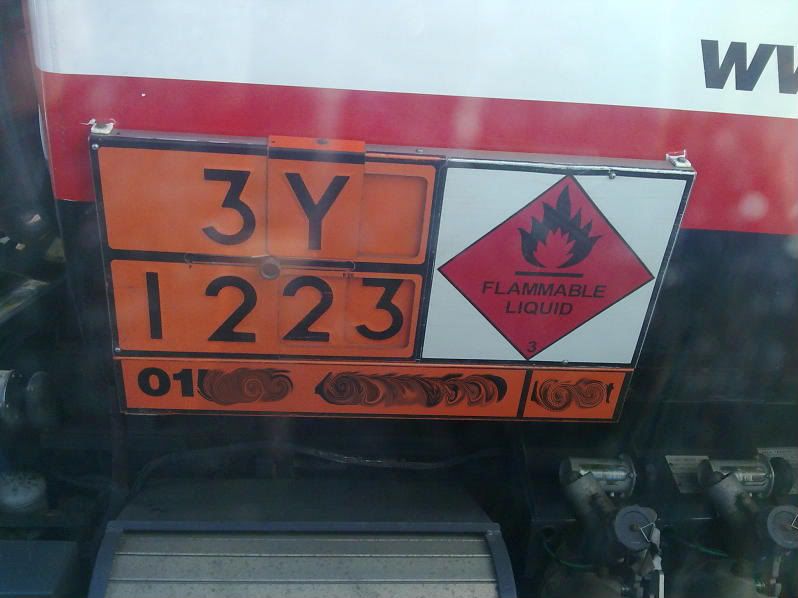Carryfast:
I know but I never did tanker ADR and did’nt want the rest either so it was’nt my scene but I did have some idea of the realities of fire fighting.In a worse case scenario the driver is’nt going to report anything as he’ll be on his way to hospital if he’s lucky.
Hi Carryfast, You’ve raised some interesting points, some of which are outside my area of expertise as an ADR instructor and DGSA.
Sticking with UN 1223 KEROSENE, 3, PGIII (as in the OP) I can tell you that any flammable liquid in PGIII is counted as being of a low danger. The legal criteria for inclusion in UN Class 3 PGIII are that the substance has an initial boiling point >35 degrees C and a flashpoint >23 degrees C.
The flashpoint of Kero is variable, but it’s usually somewhere around 35 deg C.
Most responsible companies tend to put extra info on their paperwork, such as an emergency specialist phone number and the EAC code for the substance. Those aren’t actually a legal requirement, but it’s often done as ‘best practice.’ Each emergency situation is different, but usually, the driver is able to make a 999 call and supply the info by reading from the paperwork after getting to a safe distance.
Carryfast:
That code 4 or any other one won’t be there as I said because by the time any call has got through the thing could be well away and the signs will be unreadable?.
There’s a general requirement for tanker markings to be readable for 15 mins engulfment in a fire, I guess that’s within most 999 response times, but I’m not a firefighter.
Carryfast:
As far as I know there are’nt any aircraft type fire trucks based in range of many places on many motorways?
You’ve got me with that one mate. I’ll confess that I’ve no idea, but I do trust that the chief fire officer for each fire-brigade has a plan for such eventualities. 
Carryfast:
and I’ve certainly never seen anything like one at anything I’ve ever seen involving fires on the road?.But it would be good to think that the fire services could provide something with that type of ability in all cases but differentiating between the two types of fire while it’s burning and then calling out something with the type of dry powder output needed would be another matter in the timescale needed in that type of scenario?.
I agree with your comment about the dry powder output, but I do know that there are some rapid response units dotted about.
![]()
![]() does each number mean something on its own or does the whole sequence mean something
does each number mean something on its own or does the whole sequence mean something ![]()
![]()
![]()
![]()
![]()
![]()
